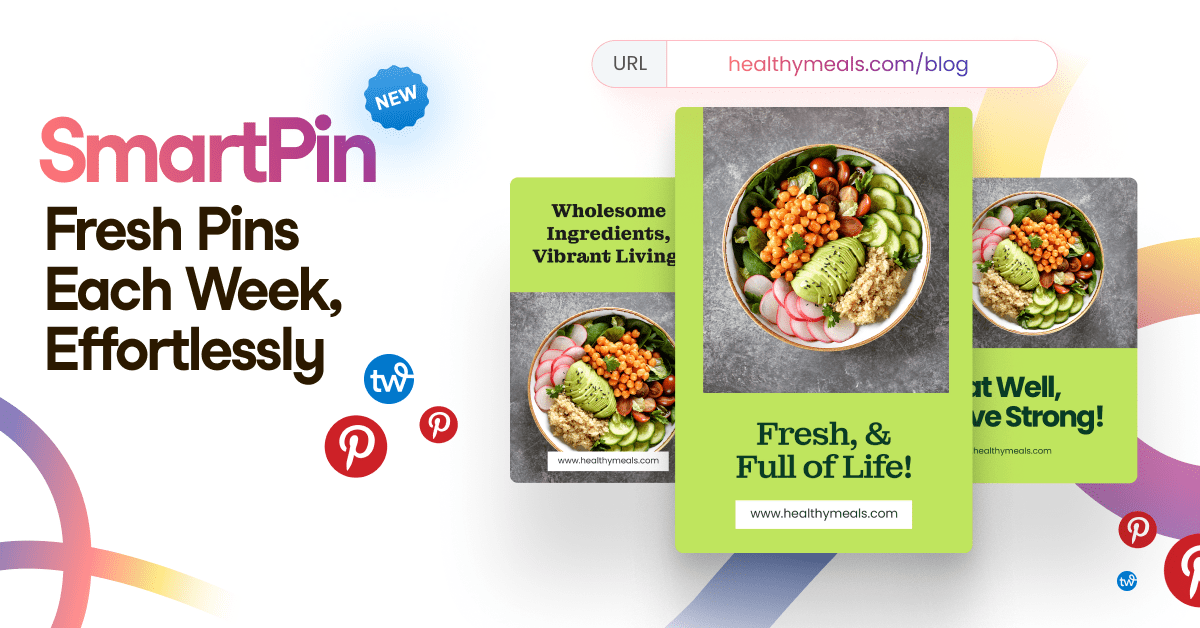
Now that ChatGPT is all the rage, it’s time to ask the question: Is artificial intelligence all that it’s made out to be?
That is, are all these AI writing assistants good enough to see widespread adoption among professional writers or creatives who wish to boost their daily output while retaining the ability to produce high-quality content — are they good enough to warrant a paid subscription?
AI is fast weaving itself into our daily lives with every passing hour as it begins to flex its muscles and brings on the first wave of disruption that has caught the interest of the masses at increasing momentum.
And one of the most talked about use cases for AI is in the realm of content marketing with its creative professionals such as copywriters, content writers, and content marketers.
Nowhere is this more evident than in the emergence and rising popularity of AI writing assistants, where generative AI is changing how professional copywriters optimize their writing workflow and bang out more content using AI-generated copywriting templates.
Is AI now smart enough to be a writing assistant for generated content such as website copy, product descriptions, and original content?
The truth is that it isn’t that far away from being an excellent (if not essential) tool for every professional copywriter. AI is, after all, in its very first steps as a technology and has shown its proficiency in learning patterns and scaling them to new heights — allowing creatives to focus on productivity.
For instance, a copywriter might use an AI writing assistant to hash out the framework of a new article by stating the ideas that the writer wants to include in the output, which can then be fleshed out and spruced up for human consumption afterward.
Alternatively, a copywriter struggling with writer’s block could spark new ideas by entering prompts into AI tools such as ChatGPT and use the results as a canvas from which to derive ideas.
In some cases, AI writers can even create long-form blog content that just needs a little polishing to be ready to publish.
Let’s begin this journey into AI writing assistants by discussing their history, learning how they work, and looking at their benefits — including some best practices for leveraging them for your writing tasks.
What is an AI Writing Assistant?
AI writing assistants have come to the forefront of content marketing. With advanced language models powering AI writing apps today, many of the tools can bang out a quite compelling landing page within moments based on the prompts. Keep in mind: the better your inputs are, the better the chances of you getting somewhere close to what you wanted — and the more time you can devote to adding your personal flair to the generated content.
Moreover, AI writing assistants can draft a blog post from scratch just by giving it several keyword prompts. In essence, AI creates the bulk of the content for you so you can make any other changes and additions and deliver texts faster than you normally could.
AI writing tools are also excellent for generating content ideas. For instance, they can give you copywriting, screenplay, or book ideas or generate tailored content for B2B and B2C companies that need to jumpstart their creative juices. Moreover, these AI tools aren’t just excellent with words — they are also beginning to improve in generating humor and emotions.
Not surprisingly, AI writing assistants like Tailwind Ghostwriter are fast becoming the Swiss army knife of content marketers, copywriters, and creatives to help them generate massive, scalable amounts of quality content.
By no means are AI writing assistants replacing humans as far as copywriting and creative writing are concerned, but they do facilitate the process. AI writing assistants that produce unique content at the flick of a wrist help writers overcome the dreaded writer’s block and save time and effort.
How AI Writing Assistants Work: Understanding the Technology
The current market for AI writing assistants has revealed three major types of products: we have AI text predictors, text generators, and text editors.
Certain AI tools combine one function with another for greater scalability.
That said, how do we distinguish a writing assistant that performs real-time text prediction, a writing assistant that creates content in one shot, and AI tools for editing?
3 Types of AI Writing Assistants
The common denominator that ties these types of writing assistants together is their ability to help you create content faster, more accurately, or both, but in general, each type of writing assistant has its own unique use case.
Text prediction tools
Predictive AI text tools work to predict the next word you wish to type in a sequence. Text prediction tools constantly provide suggestions about the next word, phrase, or letter as you manually type. These suggestions can be either rejected by continuing to type or accepted by pressing the ‘tab’ as you go.
Predictive AI text tools help you type faster by saving on a ton of keystrokes that you would otherwise have to manually press. These AI learning models base their suggestions on your typing behavior and style.
AI text generator (automatic writing assistant)
Text generators powered by AI, also known as automatic writing assistants, work best when generating content for blog posts, landing pages, email sequences, or ad copy in one shot. By entering prompts about what your writing goals are, what type of content you’re writing, the tone and style of your writing, and your keywords, they are able to produce a text based on said user inputs in mere minutes.

Such tools enable content writers, marketers, and professionals to pound out texts in a short amount of time regardless of text length and save time and effort, especially when writer’s block rears its ugly head.
Tailwind Ghostwriter tool falls into this exact category. Think of it as your writing buddy or a co-pilot!
AI text editor (editing assistant)
As the name implies, text editor AI tools — often referred to as grammar checkers or proofreaders/spell checkers — work at correcting stylistic, typographical, and grammatical errors to ensure that a piece of writing is free from errors or misuse.
Other similar editing tools also help suggest structural, logical, or stylistic improvements, allowing you to tweak a text and adjust its tone based on your requirements.
Most AI text editors aren’t equipped with predictive text as yet, so their main value proposition is to improve the quality of an existing piece of content and hasten the time it takes to proofread and edit a text rather than boost scalability or productivity per se.
Grammarly would be an example in this category.
Benefits of Using AI Writing Assistants
There is a wide array of benefits to using AI writer software. Here are some general benefits content creators stand to gain from using such software, as well as a deeper dive into their most salient benefits.
Enables faster content production
Perhaps the major benefit of using an AI writing assistant is how it enables writers to scale and produce greater amounts of content in a shorter amount of time.
If you’re a content marketer or copywriter working with multiple clients and multiple deadlines, using one can help you focus on imparting your unique voice and stylistic flair rather than the time-consuming effort it takes to build out an article from scratch.
Some AI tools are also improving at mimicking human tone, emotion, and style.
But, in most cases. it makes it easier for professional writers to produce more without running into the burnout and mental exhaustion known as writer’s block. That doesn’t only improve their writing skills — it also helps them become more profitable.
Improves content quality and tone
Anyone who writes as part of their remit as an employee, as a creative, as a student, or as a self-employed professional takes pride in their writing. Everyone wants to write better-quality content.
AI tools that provide suggestions on word choice, tone, and grammar based on the context of the article and the syntax with which it was written help improve the value of a content writer’s output.
Copywriters are then liberated to focus on the human accouterments of their articles that make a good piece of writing compelling reading regardless of the format. AI writing tools can help writers find their tone and voice while retaining the stylistic best practices of good writing.
Tailored, personalized, and accurate
AI writing assistants enable users to create personalized texts suited to particular audiences. It’s not surprising that SEO copywriters often use AI tools to produce optimized content for search engines or create content focused on increasing engagement to broaden their audiences. Moreover, AI tools have built-in grammar, tone, and spell checkers so you can tweak your text as accurately as possible before releasing it to a larger audience.
A productivity boost
Ultimately, with AI writing tools, it’s all about the extra productivity. AI writing tools simply give you more time to fact-check, research, edit, or work on other aspects of your business because they expedite your writing process.
How To Use an AI Writing Assistant Effectively
That said, what are some best practices as to how to use AI writing assistants efficiently? Here are some tips we’ve compiled after having tested a variety of AI-assisted writing tools over the past year.
Choosing the Right AI Writing Assistant for Your Needs
As we discussed earlier, there are different types of AI writers out in the market. Your mileage will vary depending on your needs. That is, how much are you relying on an AI writer to achieve your goals?
Different solutions are better suited for different content needs. Do you need something that will merely check a completed text for cohesiveness, correctness, and consistency? Then you might just need an AI text editor.
If, however, you expect to create bulk content for a variety of purposes, then you would want an AI text generator. This will all depend on your writing process, your skill set as a writer, and your workflow preferences.
Setting Realistic Expectations
Your mileage with AI writers will also vary depending on your expectations about their output. Simply put, no matter how much of a wizard you are at providing prompts, you can’t expect quality as though Bill Shakespeare was behind that AI writing assistant. AI writing tools are yet at their fledgling stages and are, as of yet, incapable of completely replacing human intellect and creativity. Knowing the limitations of the technology will save you from disappointment because generative AI still requires a modicum of human input to transform a good piece of AI-written content into really engaging, attention-grabbing content.
Using the Tool as a Writing Aid, Not a Replacement
Now that your expectations are appropriately managed with what you can achieve with AI writing tools, it’s time to use them to your benefit.
AI writing assistants are a valuable tool for writers who wish to create content for specific niches or audiences. They’re even better tools when you need to generate bulk amounts of content for clients in a scalable, flexible manner. When you reframe your concept of AI writing assistants as assistants, you can use them to great benefit.
Incorporating Your Own Voice and Style
Most generative AI writers allow you to set your tone, style, and formatting requirements. It’s fun to play around with these cool AI writing features, but don’t forget to add your own voice once the output is generated.
You don’t want to lose the brand voice you’ve worked so hard to build, only to lose it entirely to sounding too dry or robotic. Stay true to your brand voice and delivery by keeping an updated list of brand communication standards and practices and using them as prompts for AI tools you might wish to employ.
It’s as simple as that — once you reframe any of your potential preconceived notions about AI writing software and view it from the lens of a useful tool for content marketing, you unlock more potential out of it.
How To Stay on Google’s Good Side
As AI programs become increasingly prevalent, authors can capitalize on their potential to facilitate content creation.
With a few clicks of a button, one can use these tools to swiftly undertake basic spell and grammar checks or even more complex copywriting and content creation.
Despite the convenience of such technology, one must take heed of Google’s stance on AI-generated content before making the decision to leverage it. Is it worth the risk?
Understanding Google’s Guidelines for Content Quality
Google’s guidelines for ranking content rely on the level of perceived experience, expertise, authoritativeness, and trustworthiness (EEAT criteria) in each post or article.
In guidelines released in February 2023, Google emphasized the importance of creating content that will help the search engine’s end users.
If what you publish does that, Google won’t penalize you for using an AI writer as part of the process.
Review any AI content to make sure that it displays high-levels of expertise and authority. Fact check to make sure it’s trustworthy, and add information and insights that come from your own personal experience.
Expertise never goes out of style, and this is where you come in as a writer — precisely to build the trustworthiness readers will want to get from their content.
If you are interested in learning more, check out our post about Google AI guidelines.
Avoiding Over-Reliance on AI
It’s worth emphasizing that AI is still a nascent technology, despite its rapid growth. AI is still heavily reliant on data science and algorithms to produce content.
Therefore, AI may sometimes miss out on the intended tone of an article, especially when you try to write with layers of irony, humor, or sarcasm in your style.
Moreover, you need to thoroughly fact-check your text before publishing lest Google slaps you on the wrist for an infraction.
Incorporating Human Insights and Expertise into Your Content
AI writing tools are best used to source suggestions as to content topics, help paraphrase short excerpts, check spelling, grammar, and tone, and ensure that your voice shines through. They are excellent tools to help turn on the creative juices when you’re getting your usual issues with writer’s block.
That said, your human insight and expertise are what transform AI-generated SEO content into entertaining, compelling copy that readers will want more of. Here are some tips to help you get the most out of AI writing tools while you draft content:
- Know what kind of content your target audience is looking for.
- Make sure to incorporate Google’s best practices for content — keep your expertise, authoritativeness, and trustworthiness front-and-center in your content.
- Review your content to make sure it is readable for humans and therefore satisfying for their consumption.
- Constantly proofread, re-read, and edit your content while infusing it with your unique voice as a writer to make it more human.
In Conclusion
AI copywriting software is undoubtedly the answer you’ve been looking for if you wish to scale your content production capabilities to a whole new level — regardless of whether you’re doing so to generate high-quality backlinks, attract more organic traffic, or simply get better rankings over your competition — in a lesser amount of time.
There’s no question that AI is here to help bring about the next evolution in content creation — and professional writers who know the ins and outs of using AI copywriting software to create consistently high-quality content and generate more organic traffic from online search engines will be at the prime position to drive innovation and command larger, more scalable business.
AI writing assistants are invaluable as a tool to sell your products and services over the internet, considering the leaps and bounds it has already made when it comes to creating excellent, almost human-like content. It could be the key to automating your writing tasks, expanding your productivity, and unleashing your maximum profitability.
Curious to try out the cutting-edge AI writing assistant? Give it a shot with Tailwind Ghostwriter!
Pin it!





